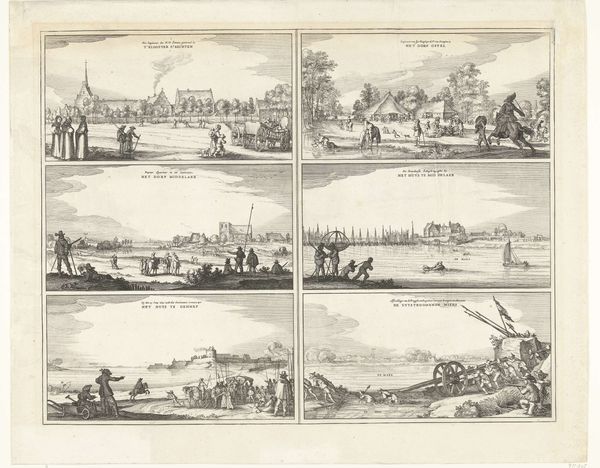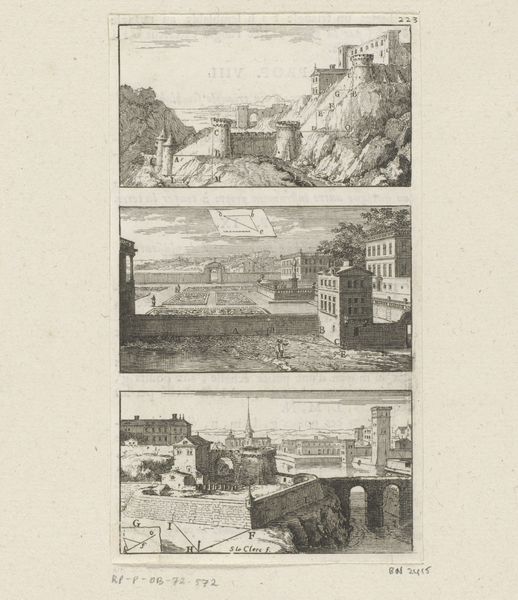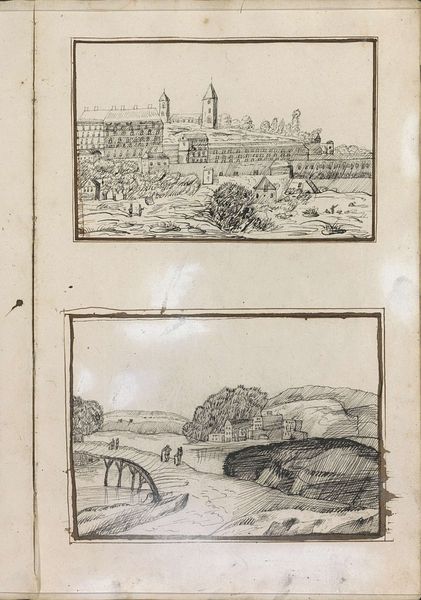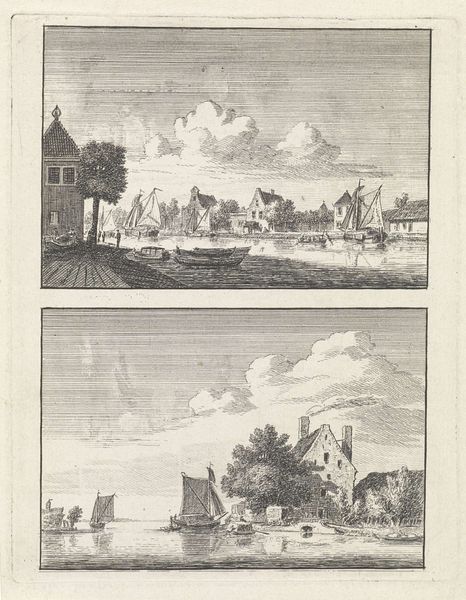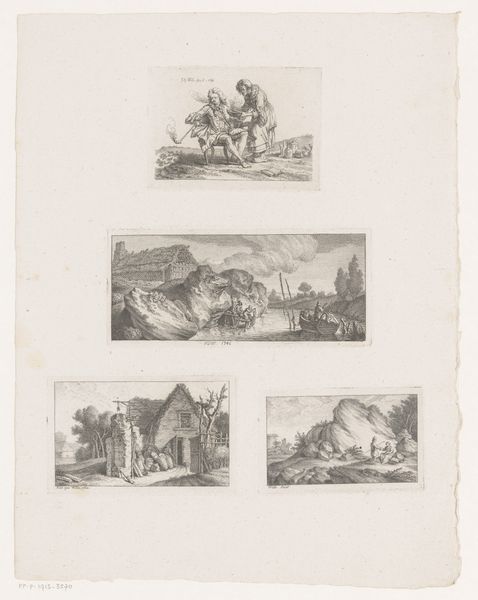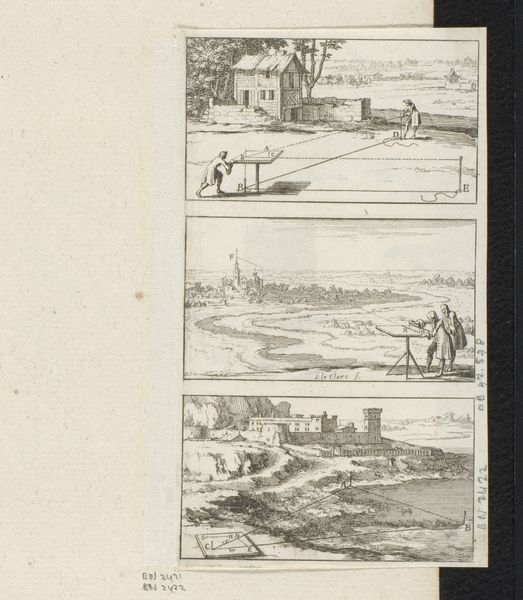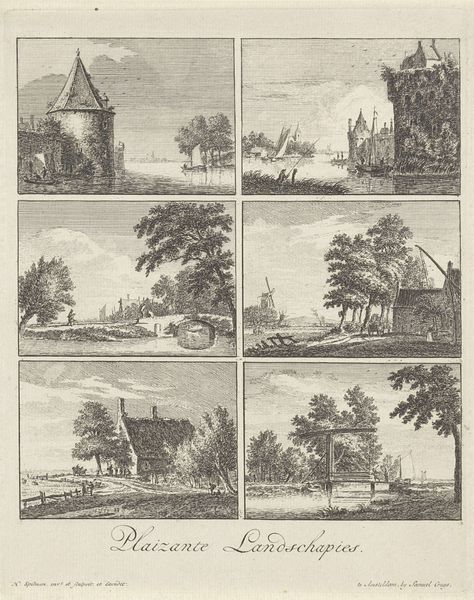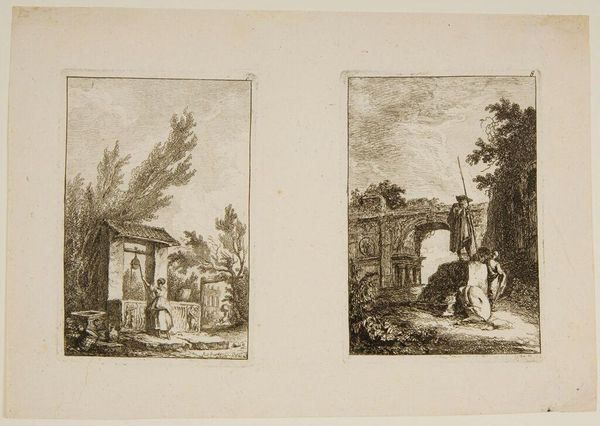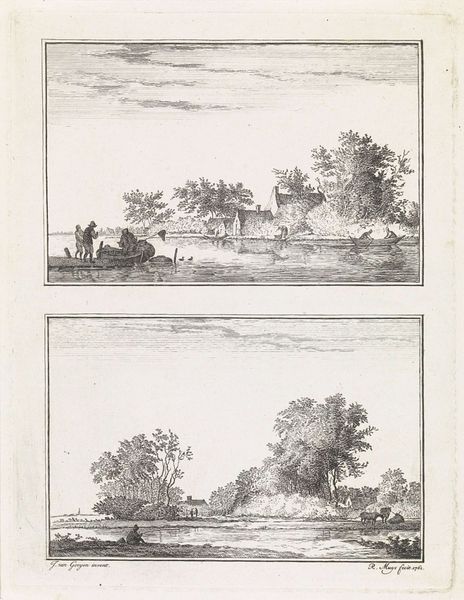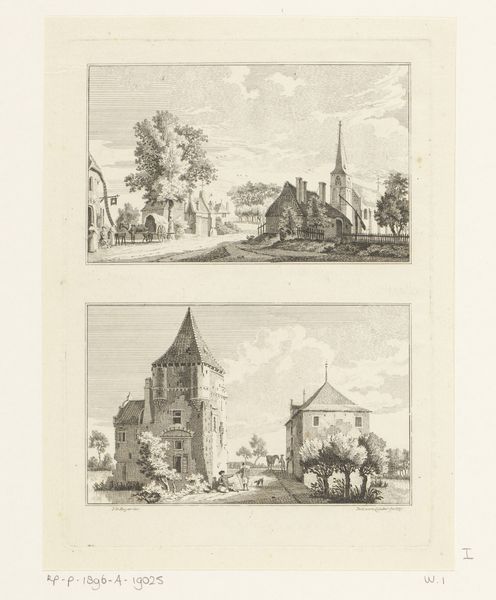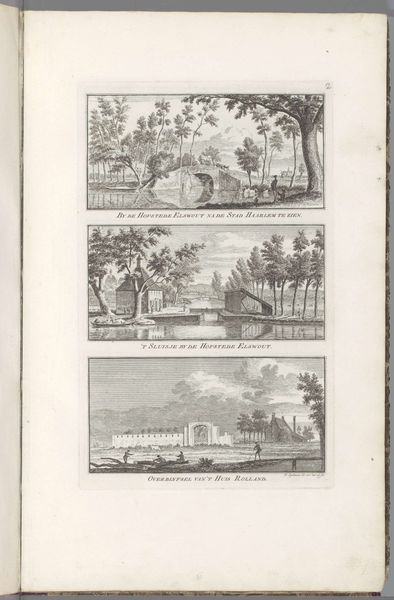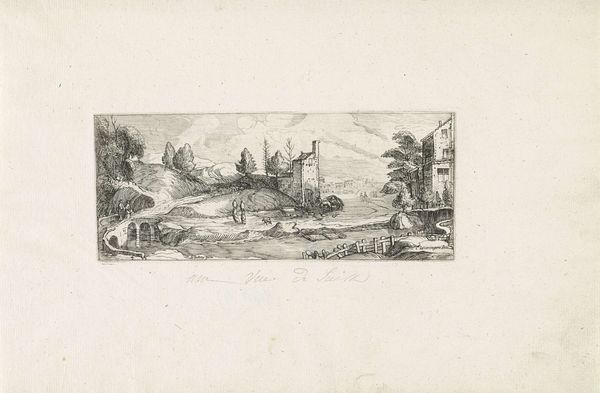
Huis Kostverloren / Landweg bij Amstelveen / Mijlpaal bij Sloten 1612 - 1652
0:00
0:00
drawing, print, paper, ink, engraving
#
drawing
#
dutch-golden-age
# print
#
landscape
#
paper
#
road
#
ink
#
cityscape
#
engraving
#
realism
Dimensions: height 57 mm, width 99 mm, height 57 mm, width 98 mm, height 57 mm, width 99 mm
Copyright: Rijks Museum: Open Domain
Curator: This print, created between 1612 and 1652 by Claes Jansz. Visscher, is titled "Huis Kostverloren / Landweg bij Amstelveen / Mijlpaal bij Sloten," which translates to "House Kostverloren / Country Road near Amstelveen / Milestone near Sloten." It’s an engraving in ink on paper, showcasing three distinct landscape vignettes. Editor: Immediately, I'm struck by how matter-of-fact these scenes are. There’s a real dedication to recording the material realities of the Dutch countryside, wouldn't you say? Each image is compact, efficient. Curator: Precisely! These are not idealized landscapes, but rather representations of specific places within broader historical and social currents. Think about land ownership, class distinctions visible in clothing, even the rise of a mercantile society demanding efficient infrastructure reflected in the road by Amstelveen. Editor: Yes, that road itself is significant! Consider the labor involved, the resources expended in its construction. It's a testament to the changing economic landscape, the infrastructure required for the burgeoning trade networks. The Milestone anchors this piece and highlights trade practices, in that these markers dictate not only physical progress but can be symbolic for financial. Curator: Absolutely. And looking closer at "Huis Kostverloren," the ruined state of the building may comment on changing fortunes, the transience of wealth and power. The building becomes a metaphor for societal transformations, almost mirroring contemporary debates around wealth disparity and access. Editor: It’s also interesting how Visscher utilizes the engraving technique itself. The density of lines suggests a dedication to the work. Also to reach such small precise etching on small material of copper is truly the hands and time for making a wage as a skilled worker and not as one born into privilege. Curator: These images are fascinating windows into a past where the land was undergoing immense changes, its spaces becoming increasingly defined by property lines, trade routes, and emergent class consciousness. Editor: Agreed, reflecting on this work brings the material reality and historical implications to life. The work serves to allow us to look into society’s structure and place within an evolving social framework.
Comments
No comments
Be the first to comment and join the conversation on the ultimate creative platform.
